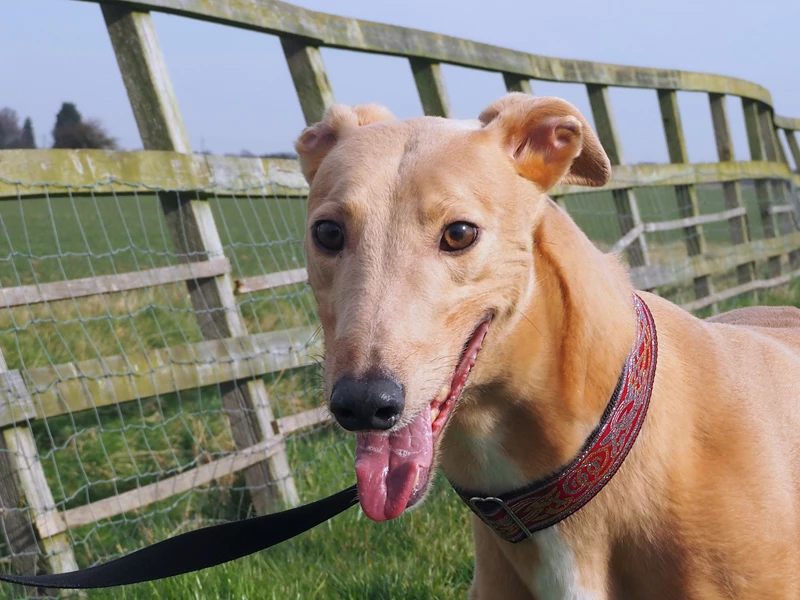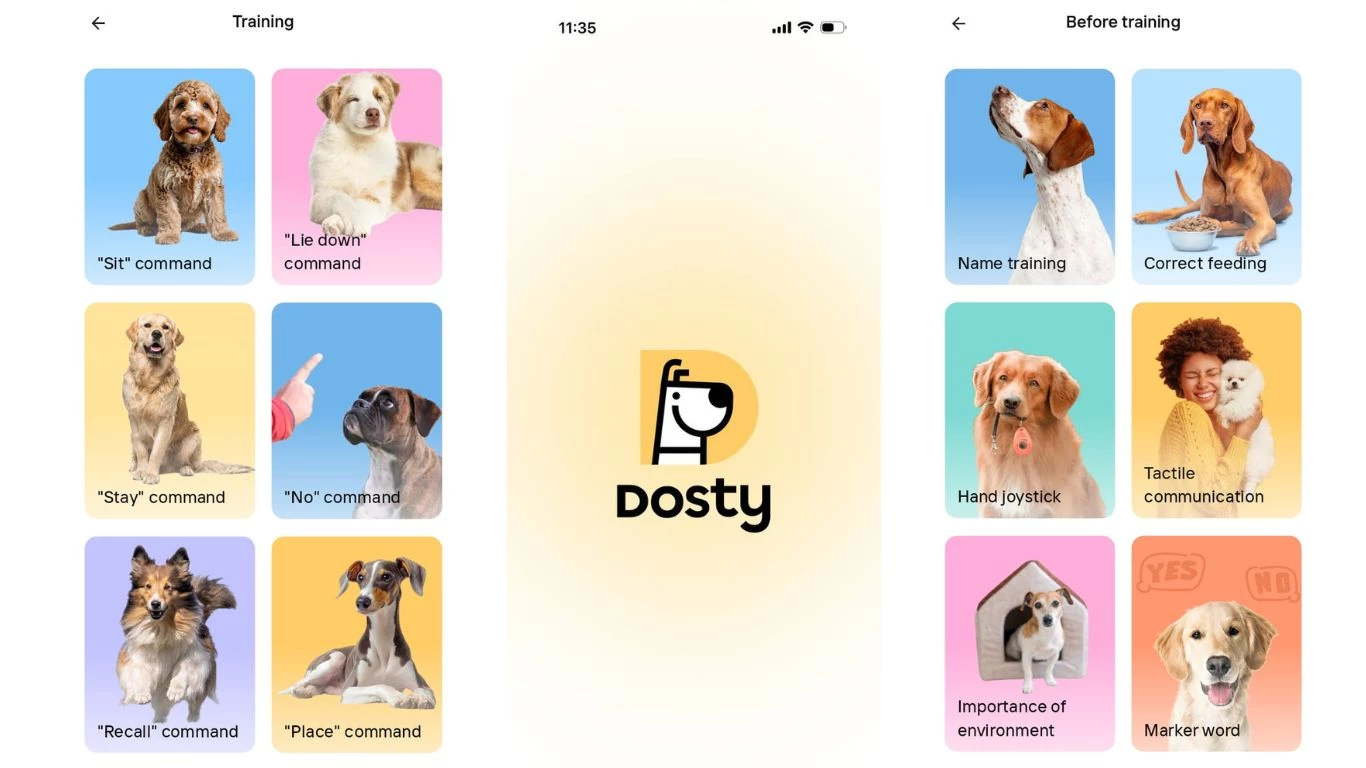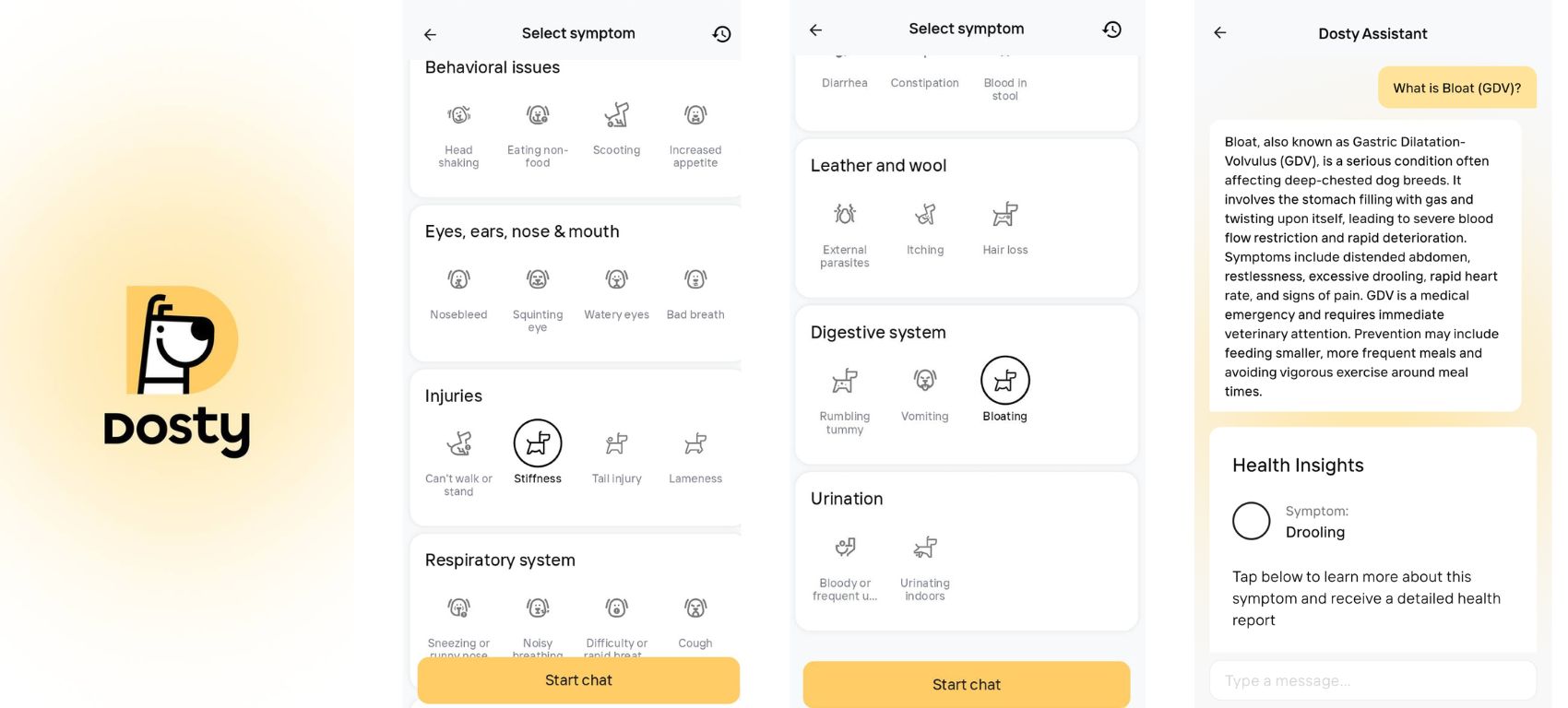On this page
About the Blue Fawn Greyhound
A Blue Fawn Greyhound is a rare color variation of the greyhound, a breed known for incredible speed and a sleek build. The Greyhound is an ancient breed descended from Arabian Sighthounds and Celtic Hounds, bred for hunting and racing. The breed dates back more than 4,000 years to Ancient Egypt, where early Greyhound-type dogs chased fast game, including hares and gazelles. The breed was refined for coursing and racing in Great Britain during the 1700s, and it is now considered one of the most renowned sighthounds in the world.
💡 Quick Facts About Blue Fawn Greyhound
_1743505529.jpg)
According to Dr. Shelby Baden, “Greyhounds, including the Blue Fawn variants, need specific care for their joints and skin. Pet owners should carefully monitor their diet, physical activity and environmental exposures.”
🐾 Track your Greyhound’s care routine effortlessly with the Dosty App’s Pet Diary! Never miss a vet visit or feeding time.
Is the Blue Fawn Greyhound a Unique Breed?
No, while it is a rare coat variation of the standard Greyhound, the Blue Fawn Greyhound is not a separate breed. With a dilution of the fawn gene, their unique color features a silvery, bluish layer laid over a fawn base, with (typically) a blue nose and amber or grayish eyes.
What Makes the Blue Fawn Greyhound Special:
Rare Coat Color – Blue fawn is one of the rarer shades of Greyhound which makes these pooches particularly eye-catching.
Elite Speed – They’re made for sprinting, just like all Greyhounds, and can reach a maximum speed of 72 km/h (45 mph).
Easy-Going Personality – While they have racing blood in them, they are known for being calm, silent, and affectionate when indoors.
Coat color also plays no role in their personality or temperament. Blue Fawn Greyhounds tend to be as easy-going and intelligent as other Greyhounds.
Sensitivity to the Sun – Pale-colored Greyhounds (like blue fawns) may sunburn or have skin sensitivity issues since their skin is more exposed, so protective measures like dog-safe sunscreen can be handy
_(1)_1743505899.jpg)
“The coat color doesn’t make a difference in a Greyhound’s temperament, but owners of light-coated dogs should be aware of UV exposure, particularly on summer walks,” Dr. McCauley says.

How Big Do Blue Fawn Greyhounds Get?
Blue Fawn Greyhounds are an enormous and lanky type of pet. Their body size relative to their speed and endurance make them one of the fastest breeds globally. Although they are a large-framed breed, they are easygoing and have a calm demeanor that makes them an ideal pet no matter your living situation.
Blue Fawn Greyhound Growth Chart:
🔹 Males are larger and heavier than females, but have a muscular but slim build.
🔹 Blue Fawn Greyhounds will be able to grow fully in height by the time they are 12–18 months old, although their muscles will continue developing until they are about 2 years of age.
🔹 They have lower body fat than most other large breeds (2-5% compared to 15-25%), so they are more susceptible to temperature shifts.
Their long legs, deep chest and light bones give them thrust, so they are born sprinters. But, due to the fragile nature of their body, they require soft bedding, and a narrow diet to keep their joints healthy.
Raising a Blue Fawn Greyhound❓ It’s not like raising just any dog.
Their fast growth, fragile joints, and lean body need special care—especially in those early months.
📲 Use the Dosty App to track development, manage nutrition, and support their health from pup to adult.
_1743506339.webp)
Do Blue Fawn Greyhounds Have Specific Dietary Needs?
Yes, considering the high lean muscle mass and high metabolic needs of Blue Fawn Greyhounds, they need a protein-rich and energy-dense diet. Due to their low body fat (2-5%) they require nutrient dense meals so they can stay healthy.
Blue Fawn Greyhound Perfect Diet:
- Protein (30-40%) – Builds lean muscle (ex: chicken, beef, fish)
- Healthy Fats (15-20%) – Energy and coat health (source — salmon oil, flaxseed)
- Carbohydrates (20-30%) – Energy action sustained (sources: brown rice, sweet potatoes)
- Joint Supplements – Supports bone and joint health (glucosamine, chondroitin)
Avoid:
❌ Grain-heavy diets — Can lead to bloating and digestive issues
❌ Artificial fillers – Causes malnutrition and lack of energy
Feeding a Blue Fawn Greyhound isn’t just about filling a bowl, it’s about fueling their unique body.
📲 Get personalized nutrition tips, feeding schedules, and vet-backed guidance on the Dosty App.

Are Blue Fawn Greyhounds Easy to Groom?
Yes, Blue Fawn Greyhounds are one of the low maintenance to groom dog breeds, very little grooming is required with dogs like Blue Fawn Greyhounds which have no undercoat and short fine coat. But their thin skin and absence of an undercoat require special treatment to ward off irritation, dryness and sunburn.
Blue Fawn Greyhound Grooming Guide:
✔ Brushing (1x per week) – Using a soft-bristle brush or grooming mitt removes loose hair and helps keep the coat healthy.
✔ Bathing (6–8 weeks) – Use a gentle, hypoallergenic dog shampoo to avoid drying out the skin. No over-bathing: it removes natural oils from the skin.
✔ Skin Care – Their thin skin is susceptible to cuts and scrapes, so owners should inspect for injuries regularly. Hydrating balms or coconut oil may also help dry patches.
✔ Sun Protection – Their short, light-colored coat makes them prone to sunburn. If he spends long hours outside, apply dog-approved sunscreen.
✔ Ear Cleaning – Because greyhound ears are folded, they can trap dirt and moisture, resulting in infections. A vet-approved solution can be used to clean their ears weekly.
Are you tired of dealing with ear infections or the awful smell coming from your Greyhound’s ears❓ Their floppy ears trap dirt and moisture quickly if they don’t get cleaned often.
🎯 Save on expensive vet bills and discomfort for your dog.
Check out the step by step ear cleaning video below and treat the ear care stress-free with Dosty’s expert guidance!
Blue Fawn Greyhound Grooming: Specific Considerations:
❌ No shaving required – Thick-coated breeds may need to be shaved but Greyhounds do not.
❌ Cold Sensitivity – They have no undercoat therefore, they can feel cold during winter. If it’s cold, consider a dog sweater or coat for walks.
“Greyhounds’ thin coats make them very prone to skin damage,” said Dr. Carling Matejka. Owners should be using gentle grooming products and protective measures to maintain coat and skin health.”
How To Keep Your Blue Fawn Greyhound Happy and Healthy❗
Their sleek coat is relatively low-maintenance, but they require a bit of extra care when it comes to their sensitive skin, like sun protection, gentle brushing, and weekly ear maintenance.
With Dosty, get grooming guides, care tips and intelligent reminders right from your phone.
Do Blue Fawn Greyhounds Enjoy Playtime?
Absolutely, Blue Fawn Greyhounds are calm and lazy indoors, but they need playtime and daily exercise to remain healthy and happy. They’re sprinters, not through-hikers, and prefer short, vigorous bursts of activity to long hours of exercise.
Blue Fawn Greyhound Activities Preferred:
Fenced sprints – A simple, short distance sprint burns of energy.
Lure Coursing – Simulates their natural hunting instincts, which will keep them busy.
Agility – They are not endurance athletes, but love speed and obstacle courses.
Fetch and Tug-of-War – Short sessions using soft toys minimize joint strain.
How Much Exercise Do Blue Fawn Greyhounds Need Daily?
🔸 They can stay healthy with moderate play for only 30–60 minutes or a quick sprint.
🔸 Optional long walks, which need to be combined with off-leash running in a safe area.
🔸 Unlike haute couture breeds, Greyhounds are perfectly content sleeping for the hours after playtime;
Avoid:
🚫 Play rough with large dogs – Their delicate structure is prone to injuries.
🚫 Puppies with too much exercise – With joints that are still crystallizing, no jumping or running.
Due to their relaxed temperament, many owners are taken aback by their occasional spurts of energy followed by long periods of rest. Blue Fawn Greyhounds are described as "rocket fuel couch potatoes."
❗They may nap like pros, but when it’s time to move, your Blue Fawn Greyhound needs the right kind of activity.
Use Dosty App’s training guides to build healthy routines that match their speed and protect their joints.

Are Blue Fawn Greyhounds Good for Families?
Yes, Blue Fawn Greyhounds are excellent family dogs. They are great with children, adults, and even seniors which makes them an ideal companion for various household types.
Top Reasons Why Blue Fawn Greyhounds Are the Best Family Dogs:
- Affectionate and Faithful – Build strong connections with their human companions.
- Calm and Quiet Indoors – Compared to these high-energy breeds, they would rather have a leisurely home life.
- Tolerant of Older Children – Bassets also have laid-back temperaments that lend themselves very well to being playmates for children.
- Low Maintenance – Low shedding and less grooming, another good for fuss-free pets.
For families with young kids:
🚸 Fragile Build – With lean bodies and thin skin, rough play is a big no-no.
🚸 High Prey Drive – Can run after small pets such as bunnies or hamsters.
_1743507351.jpg)
What Health Issues Are Common in Blue Fawn Greyhounds?
Blue Fawn Greyhounds are typically healthy dogs, but there are certain health conditions they may be more susceptible to because of their unique structure and genetics
Common Health Issues in Blue Fawn Greyhounds
Other Risks in Blue Fawn Greyhounds:
- Heart Issues – Greyhounds have a larger heart than most dogs; therefore, they become susceptible to cardiac issues.
- Dental Issues – Their narrow skulls mean that they require frequent dental cleaning to avoid gum disease.
- Cold Sensitivity – They have little body fat and can easily get cold, so they need warm bedding.
And for Blue Fawn Greyhound owners, this is why it’s critical to stay on top of symptoms. Without early signs making it easy to tell, their conditions can quickly become life-threatening — especially in the case of bloat, joint pain or skin irritation.
🧠 Dosty’s AI Assistant and Symptom Checker helps you monitor changes, see early warning signs, and receive evidence-based advice before things escalate.
📲 No need to wait for a vet visit, get immediate support now on the Dosty App.

FAQs About Blue Fawn Greyhounds
1. Is Blue Fawn Greyhound good with kids?
They are sweet and loving, but need supervision around small kids because of their fragile build.
2. Do they require a good bit of exercise?
Yes, they have to spend quite a lot of time running around, but period most of the period they like to be indoor.
3. Do they have a tendency to suffer from separation anxiety?
Yes, they do form strong bonds and do not like to be left alone for long periods of time.
4. How long do Blue Fawn Greyhounds live?
If looked after properly with a good diet they can live for 10–14 years.
5. Can they live in apartments?
Yes, they are comparatively quiet, relaxed and low-maintenance indoors.
Conclusion: Why the Blue Fawn Greyhound is a Great Choice
This rare and unique coat color sets the Blue Fawn Greyhound apart from the rest, as an amazing and extraordinary companion. Its similar athletic build, intelligence, and affectionate nature can be seen in other varieties of Greyhounds, but the soft blue-gray fawn hue makes it a uniquely handsome and desirable sight.
Blue Fawn Greyhounds also have more sensitive skin compared to their counterparts, needing special care for sun exposure and dryness. Moreover, their kind nature, minimal grooming requirements, and ability to adjust to different living conditions excel for both the energetic and laidback owners.
The Blue Fawn Greyhound is a wonderful option if you want a devoted, loving, and sophisticated dog. Whether as a family pet or a retired racer, this breed’s elegant personality and affectionate disposition is a match made in heaven.
🐾 Keep track of your Greyhound’s health with Symptom Checker Now!


